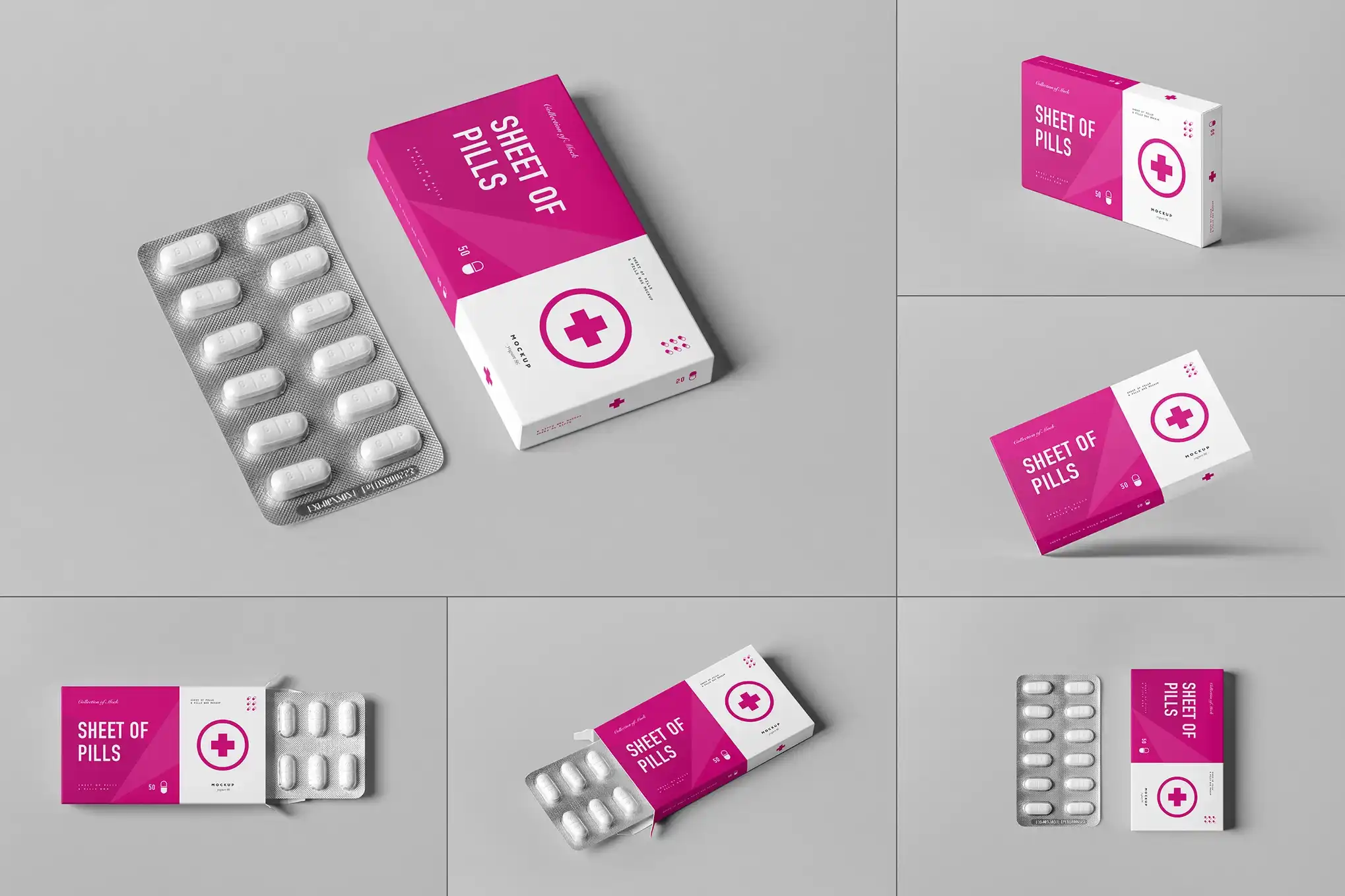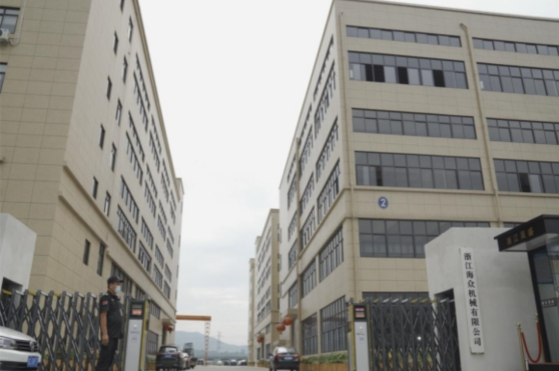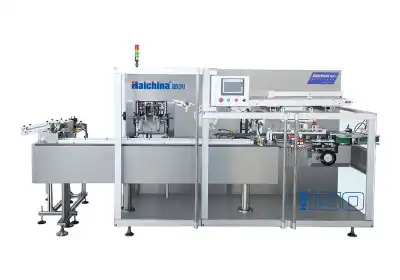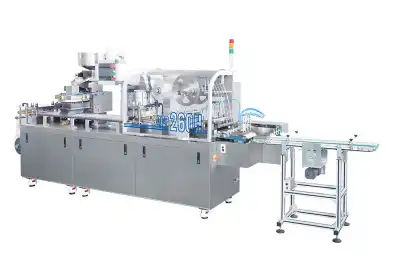What Are the Key Components of a Blister Packaging Machine?
A blister packaging machine is a sophisticated piece of equipment designed to efficiently produce blister packs for various products, particularly in the pharmaceutical, cosmetic, and consumer goods industries. The key components of a blister packaging machine typically include the forming station, filling station, sealing station, and cutting station. These essential elements work in harmony to create the characteristic bubble-like cavities, fill them with products, seal them securely, and cut them into individual units. Additional components such as the material feeding system, control panel, and conveyor system play crucial roles in ensuring smooth operation and high-quality output. Understanding these components is vital for anyone involved in packaging operations or considering investing in blister packaging technology.

The Core Stations of a Blister Packaging Machine
Forming Station: Shaping the Blister Cavities
The forming station is where the magic begins in a blister packaging machine. This component is responsible for creating the distinctive bubble-like cavities that will eventually house the products. The process typically involves heating a roll of plastic film and then using pneumatic or mechanical pressure to mold it into the desired shape. Advanced forming stations can produce complex cavity designs, accommodating various product sizes and shapes.
Filling Station: Precision Product Placement
Once the cavities are formed, the filling station takes center stage. This component ensures that products are accurately placed into each cavity. Depending on the machine's sophistication, filling can be manual or automated. High-end blister packaging machines often feature robotic arms or vision systems for precise product placement, minimizing errors and increasing efficiency.
Sealing Station: Securing the Package
The sealing station is crucial for ensuring product integrity and protection. Here, the filled blisters are sealed with a backing material, which can be foil, paper, or plastic. The sealing process typically involves heat and pressure to create a strong bond between the blister and the backing material. Some advanced machines incorporate cold sealing technologies for heat-sensitive products.
Auxiliary Components Enhancing Blister Packaging Efficiency
Material Feeding System: Supplying the Packaging Process
A reliable material feeding system is essential for maintaining continuous operation. This component manages the supply of both the blister film and the backing material. It often includes tension control mechanisms to ensure smooth and consistent feeding, preventing wrinkles or misalignments that could compromise package quality.
Control Panel: The Brain of the Operation
Modern blister packaging machines are equipped with sophisticated control panels that serve as the central nervous system of the equipment. These panels allow operators to monitor and adjust various parameters such as temperature, pressure, and speed. Many contemporary machines feature touch-screen interfaces and can be integrated with wider manufacturing execution systems for enhanced control and data tracking.
Conveyor System: Smooth Product Flow
The conveyor system is the unsung hero of the blister packaging process, ensuring smooth movement of products and materials through each station. Well-designed conveyor systems minimize product damage and enhance overall efficiency. Some advanced systems incorporate accumulation zones to manage temporary stoppages without disrupting the entire production line.
Innovative Features in Modern Blister Packaging Machines
Quick-Change Tooling: Flexibility in Production
As consumer demand shifts rapidly and product variations increase, manufacturers face growing pressure to adapt their packaging lines quickly. Modern blister packaging machines address this challenge with advanced quick-change tooling systems. These systems allow operators to switch between different blister formats with minimal manual intervention and reduced tooling downtime. The result is a more agile production environment capable of handling frequent product changeovers without sacrificing efficiency. This flexibility is especially valuable for contract packaging companies or manufacturers producing multiple SKUs, enabling them to respond quickly to shifting market requirements.
Vision Inspection Systems: Ensuring Quality
Ensuring consistent product quality is critical, especially in regulated industries like pharmaceuticals and medical devices. To support this, many modern blister packaging machines are equipped with integrated vision inspection systems. These systems use high-resolution cameras and advanced software to verify each blister pack for defects such as missing tablets, misalignment, incorrect fills, or poor sealing. Any deviation from set parameters triggers automatic rejection of the defective pack. This real-time quality assurance not only protects end-users but also minimizes product recalls, reduces waste, and enhances brand trust through reliable, error-free packaging.
Energy-Efficient Design: Sustainable Packaging Solutions
In response to global sustainability goals, manufacturers are prioritizing energy-efficient features in blister packaging machines. These innovations include servo motors with regenerative braking, improved insulation for heating zones, and smart sensors that adjust power usage based on load demands. Some systems even recycle heat generated during sealing or forming processes to improve overall energy utilization. By reducing electricity consumption and minimizing machine idle times, these designs contribute to lower operational costs and a reduced carbon footprint. Sustainable equipment also aligns with corporate environmental responsibility initiatives, helping businesses meet both regulatory and market-driven green standards.
Conclusion
Understanding the key components of a blister packaging machine is essential for anyone involved in the packaging industry. From the core stations that form, fill, and seal the blisters to the auxiliary components that ensure smooth operation, each element plays a vital role in producing high-quality blister packs. As technology advances, we're seeing innovations that enhance flexibility, quality control, and sustainability in blister packaging processes. By leveraging these advancements, manufacturers can improve efficiency, reduce costs, and meet the evolving demands of consumers and regulatory bodies alike.
Contact Us
Ready to elevate your packaging game? Contact Zhejiang Haizhong Machinery Co.,Ltd. at [email protected] to explore our cutting-edge blister packaging solutions tailored to your specific needs.
References
Johnson, A. (2022). "Advances in Blister Packaging Technology: A Comprehensive Review". Journal of Packaging Science and Technology, 45(3), 112-128.
Smith, B. & Lee, C. (2021). "Energy Efficiency in Modern Packaging Equipment". Sustainable Manufacturing Quarterly, 18(2), 67-82.
Garcia, M. et al. (2023). "Quality Control Innovations in Pharmaceutical Packaging". Pharma Tech Today, 7(1), 23-39.
Williams, R. (2020). "The Evolution of Blister Pack Design for Consumer Goods". Packaging Industry Review, 32(4), 201-215.
Chen, L. & Patel, S. (2022). "Automation and Robotics in Blister Packaging: Current Trends and Future Prospects". International Journal of Packaging Automation, 9(2), 145-160.
Thompson, K. (2021). "Materials Science in Blister Packaging: Balancing Protection and Sustainability". Journal of Packaging Materials Research, 28(3), 302-318.

Submit the form now to get a unique quote!

ZHEJIANG HAIZHONG MACHINERY CO., LTD.
Popular Blogs
-
 Successful caseProducts and services
Successful caseProducts and servicesHow to Train Employees to Operate a Bottle Packing Machine Effectively?
-
 Successful caseIndustry insights
Successful caseIndustry insightsThe Blister Packaging Process: A Complete Step-by-Step Guide
-
 Successful caseComparative analysisIndustry insights
Successful caseComparative analysisIndustry insightsWhat Type of PVC Is Best for Blister Packing Machines?